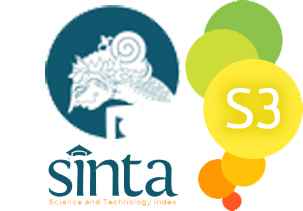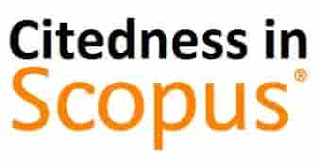Survey Entomology Aedes Aegypti di Daerah Endemis DBD Kelurahan Nusukan
Abstract
ABSTRAK
Demam Berdarah Dengue (DBD) merupakan salah satu penyakit yang disebabkan oleh infeksi virus dengue (DEN-1, DEN-2, DEN-3, atau DEN-4) yang ditularkan melalui gigitan nyamuk Aedes aegypti. Kelurahan Nusukan merupakan salah satu daerah endemis di Kota Solo terutama RW 17 dan RW 18. Pencegahan yang dilakukan yakni dengan melakukan fogging, abatisasi, dan penyuluhan terhadap masyarakat, Selain melakukan fogging, abatisasi dan penyuluhan, memantau kepadatan populasi Ae. aegypti juga merupakan hal yang penting sekali dalam upaya membantu mengevaluasi adanya ancaman DBD disuatu daerah . Tujuan penelitian ini untuk mengetahui Mengetahui Counter Index, Breteu Index, House Index (kepadatan populasi ) Ae. aegypti pada daerah endemis DBD di Kelurahan Nusukan Solo, serta untuk mengetahui ABJ di Kelurahan Nusukan. Teknik pengambilan sampel menggunakan Simple random sampling. Hasil penelitian ini menunjukkan bahwa ABJ di Kelurahan Nusukan RW 17 sebesar 95,91 %, RW 18 sebesar 89%, sedangkan untuk HI,CI dan BI sebesar 4,1%, 3,2% dan 4,1, sedangkan RW 18 HI 11,47%, CI 5,4 dan BI 13,1
Kata Kunci : Aedes aegypti, DBD,
ABSTRACT
Dengue Hemorrhagic Fever (DHF) is a disease caused by infection with dengue virus (DEN-1, DEN-2, DEN-3, or DEN-4) which is transmitted through the bite of the mosquito Aedes aegypti. Nusukan Urban Village is one of the endemic areas in the city of Solo, especially RW 17 and RW Prevention conducted the 18th with fogging, abatisasi, and outreach to the community, In addition to fogging, abatisasi and counseling, monitoring the population densities of Ae. aegypti is also a very important thing in order to help evaluate the threat of dengue fever in an area. The purpose of this study to determine Knowing Counter Index, Index Breteu, House Index (population density) Ae. aegypti in dengue endemic areas in the Village Nusukan Solo, as well as to determine the ABJ in Sub Nusukan. Sampling technique using simple random sampling. The results of this study indicate that the ABJ in the Village Nusukan for 95.91% of RW 17, RW 18 was 89%, whereas for HI, CI and BI of 4.1%, 3.2% and 4.1, while the RW 18 HI 11 , 47%, CI and BI 5.4 13.1
Keywords : Aedes aegypti, DBD























